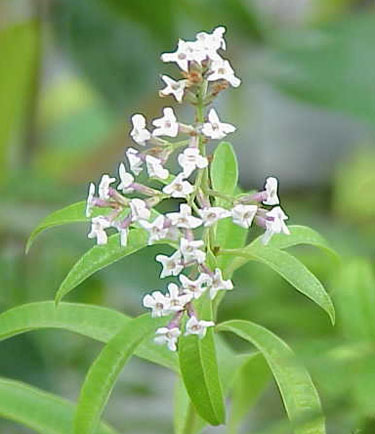COMMON NAME: verbena
GENUS: Verbena
SPECIES, HYBRID, CULTIVARS:
V. bipinnatifida-light purple perennial: 3 inches tall. V. rigida-purplish blue perennial; 1 foot tall. V. rigida-‘Flame’-red flowers from June through frost. V. canadensis-rose pink flowers from June through frost. V. venosa-purplish blue flowers; to 1 foot. V. hybrida-‘Amethyst’-lavender blue; annual. V.b.-‘Blaze’-scarlet; annual. V.b.-‘Sangria’-wine colored; heat tolerant; annual; spreads 1 to 1 1/2 feet.
FAMILY: Verbenaceae
BLOOMS: summer
TYPE: annual and perennial
DESCRIPTION: Low-growing verbena blooms profusely and adds great color to the summer perennial bed. Different species vary in height from 3 to 12 inches and in a spread from 12 to 24 inches. Flowers are small and borne on short stalks; the foliage is bright green and continuously attractive. Verbenas come in white and bright shades of red, pink, blue, and purple.
CULTIVATION: Full sun and well-drained soil are necessary conditions for growing verbena, though it thrives in a soil of average fertility. Seeds sown in spring will usually produce plants that bloom at the end of the first year. Many verbenas are treated as annuals. Seeds of these should be planted in sandy, well-drained soil during the middle of May. Pinching back the plants will keep them producing blooms and prevents them from getting lanky. Both perennial and annual types are quite drought tolerant.

The verbena found so often in our gardens today looks quite different from the native strains. The lemon verbena was found in the Andes Mountains of South America by Spanish conquistadors. The fragrance of this plant was said to be so powerfully sweet that the plant could be found by its scent alone. Unfortunately, as verbena has been hybridized to produce larger and more beautiful flowers, the power of its fragrance has diminished considerably.
Our garden verbena is closely related to V. officinalis, a species native to this country but also in many European countries.
Both the early Greeks and Romans are thought to have used different species of verbena in many of their religious ceremonies. An infusion made from the blossoms was often sprinkled on the altar of Jupiter, the supreme god in Roman mythology. The entire plant was considered sacred to Mars, the god of war, and was thought to have the power to drive away the enemy.
During Roman times it was considered good luck for a bride to wear a wreath of verbena blossoms-but only if she gathered the flowers herself. Romans also thought that he who wore verbena blossoms would be blessed with the gift of prophecy. Messengers with peaceful tidings often carried verbena with them.
Medieval times found men using verbena for protection against witches. Druids thought so highly of the plant that they offered a sacrifice to the earth before gathering it. The Saxons considered it protection against hail storms.
Verbena has been used extensively as medicine through the ages. It was used to cure scrofula, to treat the bites of rabid animals, and to prevent poisoning. Leaves, boiled in vinegar, were used to treat pleurisy, lumbago, and rheumatism. Sniffing dried, crushed leaves was thought to cure a headache. Concoctions made from the plant were also used to treat nerves, epilepsy, and asthma and were thought to strengthen the womb of a pregnant woman.
Superstition suggested that verbena, tied with one yard of white satin ribbon and left with a sick person, would hasten the return of good health.
Verbena has been called simple’s joy because it was used so extensively for healing. An ancient meaning of the word simple is a medicinal plant or herb. The genus name, Verbena, is from herbena, from the two Latin words herba and bona, meaning “good plant.”
Albartus Magnus, in his book The Vertues of Herbes, Stories and Certain Beastes, says that “infants bearing it {verbena} shall be very apte to learn and loving learninge, they shall be glad and joyous.” Verbena was often used as an aphrodisiac, and people would sometimes stuff their pillows with dried verbena leaves for this purpose. Brides in Germany were offered wreaths or a love potion made of verbena blossoms. Dried blossoms were often strewn on the bedchamber floor. An infusion made from verbena blossoms and sprinkled over the floor in the dining room was thought to make the guests merrier.
In Hungary, the plant was called lock-opening herb. Superstition held that if a thief made a cut on the palm of his hand and inserted a piece of verbena leaf in it when the cut healed, he would have the power to open bolts and locks with a touch of his hand.



Reblogged this on Paths I Walk.
LikeLiked by 1 person
This is fascinating that this herb has such history. It has such a strong aroma, that I really do not like handling it; although, I would like to plant some to keep deer away from certain things.
LikeLiked by 1 person